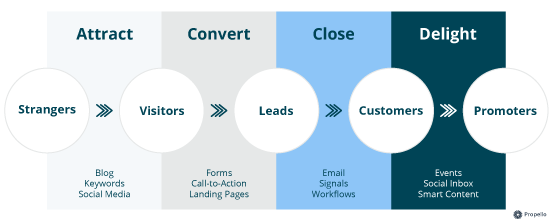Are you tired of creating designs that don't resonate with your target audience? Do you want to enhance your design skills and create user experiences that truly engage and delight users?
Look no further – this Ultimate Guide to Designing for the User Experience is here to help you master the art of creating user-centric designs.
In a world where attention spans are dwindling and competition is fierce, businesses must prioritize their users' needs and desires. Designing for the user experience is a holistic approach that considers every aspect of the interaction between a user and a product or service.
If you want to create exceptional user experiences, you need to go beyond aesthetics and focus on functionality, usability, and emotional connection.
This comprehensive guide will walk you through the essential principles and best practices of designing for the user experience, ensuring that your digital products leave a lasting impression on your target audience.
|
UX Design |
What is UX Design?
User Experience Design (UX Design) is a multidisciplinary field focused on enhancing user satisfaction and loyalty by making products, services, and marketing materials more usable, accessible, and enjoyable.
At its core, UX design is about creating experiences that are both functional and pleasurable for the user.
A Holistic Approach
UX design is holistic, encompassing a broad spectrum of design disciplines, from information architecture (organizing and structuring content) to interaction design (defining how users interact with the product) and visual design (concerned with aesthetics and visuals).
It considers both the tangible aspects, like how a button looks and behaves, and the intangible aspects, such as how the user feels when using a product or engaging with marketing materials.
Elements that Contribute to a Seamless User Experience
Several elements contribute to a flawless user experience:
-
Usability: Your marketing assets must be easy to navigate, with clear pathways for users to follow.
-
Accessibility: Make your content and design accessible to all users, including those with disabilities, by complying with accessibility guidelines.
-
Design: Aesthetically pleasing, visually consistent, and user-friendly designs enhance the overall experience.
-
Content: Compelling, informative, and well-structured content is at the heart of any meaningful user experience.
-
Performance: Speed, responsiveness, and the efficiency of your marketing materials play a significant role in user satisfaction.
UX Design Principles
1. Consistency
Consistency in design and messaging across all touchpoints helps build trust and recognition. Your audience should instantly recognize your brand whether they're on your website, social media, or reading an email.
2. Clarity
Clarity means your messaging and design should be straightforward and understandable. It's about getting your message across without ambiguity. If your audience doesn't understand your content, it's unlikely they'll convert.
3. Efficiency
Efficiency in UX means making interactions as smooth and swift as possible. Reducing friction in your user's journey, such as simplifying forms or streamlining navigation, can significantly improve conversion rates.
4. Learnability
A user should be able to figure out how to use your digital assets quickly. Learnability ensures that your audience doesn't struggle when trying to navigate your website or understand your marketing materials.
5. Error Prevention
Preventing errors in UX is about creating a safety net for your users. By ensuring that common mistakes are easily reversible, you can significantly improve user satisfaction and confidence.
These principles form the foundation of exceptional user experiences, but what's more exciting is how they can boost your marketing efforts.
The Benefits of Prioritizing UX in Marketing
A solid UX design can make or break your efforts. Whether you're designing a website, a mobile app, or an email campaign, it's crucial to put the user at the center of your design process.
Prioritizing UX in your marketing strategy doesn't just make your customers happy; it also delivers tangible benefits for your business:
1. Improved Customer Satisfaction and Loyalty
When customers have a positive experience with your brand, they're more likely to become loyal. Happy customers become brand advocates, helping you spread your message.
2. Enhanced Brand Reputation and Trust
Trust is the cornerstone of any successful marketing strategy. If your audience trusts your brand, they're more likely to convert. Great UX helps build that trust by creating a positive emotional connection.
3. Increased Conversion Rates and ROI
Better user experiences often lead to increased conversion rates. If your website is easy to navigate and your landing pages are user-friendly, it's more likely that visitors will turn into customers.
4. Better SEO and Visibility
Google and other search engines prioritize user-friendly websites in their search rankings. By creating a website with excellent UX, you're more likely to climb the search engine results pages (SERPs).
5. Competitive Advantage
Good UX is your secret weapon against the competition. It helps you stand out, and it's a potent differentiator in a crowded market.
The UX Design Process
Implementing UX in your marketing starts with understanding the UX design process. It's not just about creating a pretty website; it's about crafting an experience that drives conversions.
1. Research and User Analysis
You need to know your audience like the back of your hand. Developing user personas and mapping out user journeys will help you tailor your marketing campaigns to precisely what your audience needs and expects.
2. Information Architecture and Wireframing
Information architecture ensures your content is logically structured. Wireframing is the step where you create the skeletal framework of your marketing materials, ensuring everything is in its right place.
3. Prototyping and Mockups
Prototyping is where you start bringing your design to life. These interactive models help you get a sense of how your marketing materials will function and where they might need tweaks.
4. User Testing and Feedback
User testing is invaluable. It helps you understand how your audience truly interacts with your marketing materials. You can then use this feedback to make meaningful improvements.
5. Iterative Design and Continuous Improvement
The key to successful marketing lies in the willingness to adapt. You should continuously analyze your results and use what you learn to refine your campaigns for even better user experiences.
By understanding and implementing these stages of the UX design process in your marketing, you can build more user-centric and effective campaigns. It's a process of continual improvement that can set your brand apart.
UX Deliverables
Throughout the UX design process, you'll produce a range of deliverables that will be instrumental in shaping your marketing materials. These deliverables aren't just fancy charts and diagrams; they're powerful tools to guide your campaigns.
Personas
User personas are detailed profiles of your target audience. By understanding your users, you can create marketing campaigns that resonate with them.
User Journey Maps
User journey maps help you understand the user experience from start to finish. You'll uncover key touchpoints and potential pain points that can be addressed in your marketing.

Wireframes
Wireframes are simple sketches or blueprints of your marketing materials. They help your team visualize the layout and structure, making it easier to ensure user-friendliness.
Prototypes
Prototypes provide interactive representations of your marketing materials. These can help you catch issues and test user flow before deploying full campaigns.
User Testing Reports
User testing reports give you a deep insight into how your audience interacts with your materials. This valuable feedback can shape your marketing campaigns to be more user-centric.
Using these deliverables throughout your marketing planning and execution will ensure that you maintain a focus on the user's experience, resulting in better-performing campaigns.
How to Enhance the User Experience
Now that you've grasped the fundamentals of UX and UI design, it's time to apply these principles across various marketing channels. Elevating the user experience isn't limited to a single platform; it's about creating a seamless journey for your audience, regardless of where they interact with your brand.
Let's explore some actionable tips for enhancing UX in different marketing channels.
A. Website
-
Mobile Optimization: With the increasing use of mobile devices, ensuring your website is mobile-friendly is paramount. Responsive design allows your site to adapt seamlessly to various screen sizes, providing a consistent experience for all users.
-
Intuitive Navigation: Simplify navigation by organizing content logically. Clear menus, breadcrumbs, and a user-friendly search function make it easy for visitors to find what they're looking for.
-
Page Load Speed: Optimize your website's performance to reduce load times. A fast-loading site not only improves user experience but also positively impacts search engine rankings.
-
Clear Call-to-Actions (CTAs): Make sure CTAs are prominently displayed and easy to understand. Use compelling language that encourages users to take the desired action, whether it's signing up for a newsletter or making a purchase.
B. Social Media
-
Engaging Visuals: Use eye-catching visuals that align with your brand's identity. High-quality images and videos can captivate your audience and encourage interaction.
-
Consistent Branding: Maintain a cohesive brand presence across all your social media platforms. This includes using consistent profile pictures, cover photos, and brand colors.
-
Interactive Content: Leverage interactive elements like polls, quizzes, and live videos to encourage user engagement. Interaction fosters a sense of community and keeps your audience involved.
C. Email Marketing
-
Segmented Campaigns: Divide your email list based on user behavior, preferences, or demographics. Sending targeted content ensures that recipients receive information that's relevant to them.
-
Mobile Optimization: Similar to websites, ensure that your emails are mobile-friendly. The majority of emails are now opened on mobile devices, so a seamless mobile experience is crucial.
-
Personalization: Address recipients by their name and tailor content based on their interests or past interactions. Personalized emails have higher open and click-through rates.
D. Landing Pages
-
Clear Value Proposition: Clearly communicate the value that visitors will receive by taking the desired action on the landing page. Use compelling headlines and concise, persuasive copy.
-
Minimal Distractions: Eliminate unnecessary elements that could divert visitors' attention from the main call-to-action. Keep the focus on the desired conversion goal.
-
A/B Testing: Experiment with different elements on your landing pages, such as headlines, images, and CTAs. A/B testing helps identify what resonates best with your audience.
E. E-Commerce Platforms
-
Intuitive Product Search: Implement a robust search function that allows users to find products quickly. Include filters and sorting options to refine search results.
-
User-Friendly Checkout Process: Streamline the checkout process to minimize friction. Provide clear steps, allow guest checkouts, and offer multiple payment options.
-
Detailed Product Descriptions: Ensure that product information is comprehensive and easy to understand. High-quality images and detailed specifications build trust with potential buyers.
By applying these UX-enhancing strategies across various marketing channels, you'll create a cohesive and memorable experience for your audience. Remember, the key is to always keep the user at the center of your design decisions.
What is User Interface Design?
Now that you have a firm grasp of user experience (UX) and its significance, it's time to delve into the user interface (UI) design world. In our ongoing journey through the intricate web of digital marketing, you'll discover how UI complements UX to create seamless user experiences.
Definition and Role of User Interface (UI) in UX
User Interface (UI) design is the sibling of UX, with each playing a distinct yet interconnected role. While UX focuses on the overall experience, UI concentrates on the specific touchpoints where users interact with your product or platform.
In other words, UX is the holistic view of a user's journey, and UI is the individual components that users engage with.
The role of UI is to ensure that these components are visually appealing, intuitive, and user-friendly. This encompasses buttons, navigation menus, interactive elements, fonts, colors, and any other aspect of design that contributes to the overall look and feel of your digital presence.
To visualize this better, think of a smartphone app. The UX defines how users navigate the app, find information, and complete tasks. The UI, on the other hand, is responsible for the layout of buttons, the style of icons, the font of text, and the colors used in the app.
Key Elements of UI Design
To create a captivating and effective UI, you need to understand its core elements. Here are the key components of UI design:
1. Layout
Layout refers to the arrangement of elements on a page. A well-organized layout ensures that information is presented logically and that users can quickly find what they're looking for.
It guides users through their journey, making it a vital element in delivering a great user experience.
2. Visuals
Visual elements encompass everything from images and videos to icons and logos. These components play a crucial role in conveying information and making your content visually engaging.
Visuals should align with your brand identity and the overall user experience you aim to create.
3. Interaction Design
Interaction design focuses on how users engage with your digital platform. This involves creating responsive buttons, intuitive navigation menus, and interactive elements that ensure smooth user interactions.
A well-designed UI should minimize any friction users encounter when trying to accomplish tasks.
4. Navigation
Navigation is about how users move from one part of your digital space to another. Whether it's a website with a menu structure or a mobile app with tabs, effective navigation is fundamental.
It guides users through your content or product seamlessly, enhancing their overall experience.
5. Responsiveness
In today's multi-device world, your UI design must be responsive. This means that it should adapt to different screen sizes and orientations.
Responsive design ensures that users have a consistent and user-friendly experience regardless of the device they are using.
Integrating UI Design with UX for Seamless User Experiences
UI and UX are like two sides of the same coin, and to create exceptional user experiences, they must work in harmony. While UX concentrates on the overall feel of the journey, UI focuses on the fine details.
Here's how they come together:
-
Consistency: UI elements should be consistent throughout your digital platforms. This uniformity ensures that users can predict how things work and easily adapt to new sections or features.
-
User-Centric Design: Both UI and UX should be designed with the user in mind. They should align with user expectations and preferences, ensuring a coherent and satisfying experience.
-
Efficiency: An efficient UI, where elements are easy to find and interact with, contributes significantly to a smooth UX. Efficiency in navigation, responsiveness, and user engagement directly impacts the overall user experience.
In our digital age, UI and UX are intrinsically linked. A seamless user experience is only possible when both aspects are thoughtfully designed, keeping the user at the center of the process.
Measuring UX Success
Ensuring an excellent user experience is an ongoing process, and to evaluate your efforts, you need tangible metrics. Here are key UX metrics and strategies for measuring success:
Key UX Metrics
-
User Satisfaction (e.g., NPS): The Net Promoter Score (NPS) is a simple but valuable metric. It measures user satisfaction by asking, "On a scale of 0-10, how likely are you to recommend our product/service to a friend or colleague?" Users are categorized as Promoters (9-10), Passives (7-8), or Detractors (0-6). A higher NPS indicates better user satisfaction.
-
Task Success Rate: This metric assesses how well users can complete specific tasks on your platform. High task success rates indicate a user-friendly interface.
-
Usability Testing Findings: Usability testing with real users can uncover issues, pain points, and opportunities for improvement. Analyzing these findings leads to actionable improvements.
Analyzing User Behavior with Tools like Google Analytics
-
Bounce Rate: A high bounce rate can indicate that users aren't finding what they're looking for or that your landing page isn't engaging enough. Investigate and make improvements.
-
Time on Page: Longer time spent on a page generally signifies that the content is relevant and engaging. If users spend very little time on a page, it might not be meeting their needs.
-
Conversion Rate: Conversion metrics (e.g., sign-ups, purchases, or form submissions) are a clear indicator of user experience quality. Higher conversion rates are a sign of an effective UX design.
Gathering and Acting on User Feedback
User feedback is invaluable. Whether through direct communication, surveys, or feedback forms, listening to your users is vital. Here's how to gather and act on user feedback:
-
Feedback Forms: Place feedback forms or surveys on your website or app to gather user insights. Ask about usability, design, and suggestions for improvement.
-
User Interviews: Conduct user interviews to delve deeper into user preferences, pain points, and behavior. These qualitative insights provide valuable context.
-
Feedback Loops: Establish a feedback loop where users report issues or make suggestions, and you acknowledge and act on this feedback. This shows users that their input matters.
The Future of UX in Marketing
The marketing landscape is ever-evolving, and user experience continues to be at the forefront of these changes. Here are some thoughts on what the future might hold for UX in marketing:
Emerging Technologies and Trends
-
Augmented Reality (AR) and Virtual Reality (VR): AR and VR technologies offer exciting possibilities for enhancing user experiences. Marketers can use these technologies to provide immersive and interactive experiences, especially in e-commerce and real estate.
-
Voice Search: With the rise of voice-activated devices like smart speakers and digital assistants, optimizing for voice search is becoming a crucial aspect of UX and SEO.
-
Personalization: AI-driven personalization will continue to evolve. It will enable highly tailored user experiences, from personalized content recommendations to customized product offerings.
The Impact of AI and Machine Learning
AI and machine learning are changing how we approach UX:
-
Chatbots and Virtual Assistants: Chatbots and virtual assistants are becoming more sophisticated and play a significant role in customer service and interaction. They are available 24/7, providing quick answers and assistance.
-
Predictive Analytics: Machine learning helps predict user behavior and preferences, allowing businesses to create user experiences that cater to individual needs.
Predictions for the Evolution of UX in Marketing
-
Micro-interactions: The small, often overlooked interactions (like a 'like' animation on Facebook or a swipe on Tinder) will become more essential. These micro-interactions can greatly impact user experience.
-
Inclusive Design: An inclusive approach, considering all potential users, including those with disabilities, will become more prevalent in UX design.
-
Ethical Design: Ethical considerations in UX design will become more prominent. Designers will need to consider the ethical implications of their designs, such as user data privacy and the impact on users' mental health.
-
Cross-Channel UX: Users interact with brands through multiple channels - websites, social media, email, and more. Providing a seamless, consistent UX across these channels will be a priority.
-
Sustainability: As environmental concerns grow, sustainability in UX design will become important. Sustainable design considers reducing the environmental impact of digital products.
Conclusion
In this comprehensive guide to designing for the user experience, we've delved deep into the critical role that UX plays in modern marketing. From understanding UX principles to measuring its success, and glimpsing into the future, it's evident that user-centric design is no longer a choice but a necessity.
By prioritizing UX, you can:
- Improve customer satisfaction and build unwavering loyalty.
- Enhance your brand's reputation and foster trust.
- Increase conversion rates and maximize your ROI.
- Elevate your visibility in search engines, driving organic traffic.
- Gain a competitive edge in your industry, standing out among the crowd.
The future of marketing hinges on delivering experiences that truly resonate with users, encouraging engagement, and ultimately driving business success. As you navigate this ever-evolving landscape, remember that a user-centric approach, rooted in UX design principles, will be your most formidable asset.
If you're eager to embark on a journey of enhancing your user experiences, we're here to guide you. At Fine Media, we specialize in crafting marketing strategies that prioritize the user, ensuring they have a seamless and delightful interaction with your brand.
Contact Fine Media today and let's work together to create an experience that meets and exceeds your audience's expectations.



